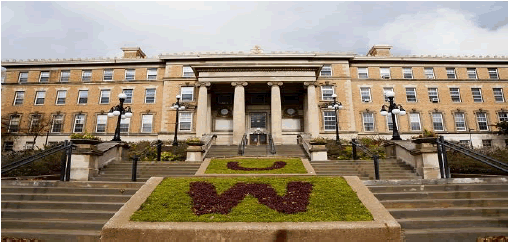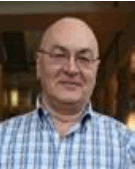Indexed In
- RefSeek
- Hamdard University
- EBSCO A-Z
- OCLC- WorldCat
- SWB online catalog
- Publons
- International committee of medical journals editors (ICMJE)
- Geneva Foundation for Medical Education and Research
Useful Links
Share This Page
Open Access Journals
- Agri and Aquaculture
- Biochemistry
- Bioinformatics & Systems Biology
- Business & Management
- Chemistry
- Clinical Sciences
- Engineering
- Food & Nutrition
- General Science
- Genetics & Molecular Biology
- Immunology & Microbiology
- Medical Sciences
- Neuroscience & Psychology
- Nursing & Health Care
- Pharmaceutical Sciences
Value Added Abstract - (2020) Volume 0, Issue 0
Effective Balance Rehabilitation in Cerebral Palsy: The Use of Translingual Neurostimulation (TLNS)
Yuri Danilov*Published: 17-Sep-2020
Abstract
Statement of the Problem: Cerebral Palsy (CP) is a neuro -developmental disorder characterized by abnormalities of muscle tone, movement, and motor skills, and is attributed to injury to the developing brain. Patients often present with a mixed movement disorder comprising dystonia and choreoathetosis, axial hypotonia, and sometimes coexisting spasticity leading to severe impairment in activities of daily living. The majority of CP symptoms are considered unpreventable and incurable. The combination of Translingual Neurostimulation (TLNS) and contemporary physical therapy methods demonstrate high effectiveness in balance and movement skills rehabilitation.
Methodology & Theoretical Orientation: The study includes 172 children (112 in the primary active and 60 in control groups), age 2-16 years old. The therapy course consists of two weeks of physical therapy combined with 20 min stimulation sessions twice a day (physical therapy only for the control group). Several subjects’ subgroups got up to 5 subsequent therapy sessions with 6-12 months apart. The balance performance was evaluated by the Berg test. Motor skills were evaluated by GMFCS and FMS scales and hands and legs plasticity by the Ashworth scale.
Findings: In the control group, physical therapy was minimally effective (in 77%of subjects) and did not sustain in between courses. In the active group, the balance performance improved much stronger in 92%of subjects and about twice better than in the control group. Improved balance sustained in between courses and accumulated sequentially. As a final cumulative result, the balance improved up to 30-35 points on the Berg scale. Similar results were observed in the improvement of motor skills development and decrease of plasticity.
Conclusion & Significance: Translingual neurostimulation, in combination with physical therapy, is a useful tool to facilitate rehabilitation in cerebral palsy kids. Achieved balance improvement sustains up to 12 months in between sessions and can be progressively accumulated in sequential therapy courses.liquid, 1-butyl-3-methylimidazolium hydroxide ([BMIM]+OH−) for the fabrication of different shapes of ceria nanostructures was adopted. The features of the fabricated ceria and their corresponding gold nanocatalysts were characterized by employing ICP, HRTEM, XRD, XPS, BET and UV–vis spectroscopy. Catalytic performance of CeO2 and its dependence on shape was studied in the oxidation of CO and olefins epoxidation. The ratio between the ionic liquid and cerium precursor is one of the valuable factors used to monitor the growth of the particles. The catalytic performance of ceria was found to be dependent on the morphology of the catalysts. The catalytic performance of CeO2 in the form of nanorod shapes is better than that of nanocubes and bulk. The deposition of gold nanoparticles on different shaped CeO2 much enhanced their catalytic performance. This enhancement in catalytic performance was, however, more significant in the case of rod-shaped ceria.

Biography:
Yuri Danilov, PhD, currently is the Leading Scientist in Pavlov Institute of Physiology, RAS, Sankt Petersburg, Russia. He is a former Senior Scientist and Neuroscience Director in Tactile Communication and Neuromodulation Laboratory (TCNL), Biomedical Engineering Department, UW-Madison, USA. Dr. Danilov received an MS degree in Biophysics, in 1978, from St. Petersburg University in Russia and a Ph.D. degree in neuroscience, in 1984, from the Pavlov Institute of Physiology. He is a system Neuroscientist with experience in research on the special senses, including vision, taste, hearing and balance. Dr. Danilov is the lead discoverer and developer of the Translingual Neurostimulation technology.

Speaker Publications:
1.Wildenberg, J.C., Tyler, M.E., Danilov, Y.P., Kaczmarek, K.A., Meyerand, M.E. (2010) “Sustained cortical and subcortical neuromodulation induced by electrical tongue stimulation”. Brain Imaging and Behavior, 4, 199-210.
2. Harbourne, R., Becker, K., Arpin, D. J., Wilson, T. W., & Kurz, M. J. (2014). ‘Improving the motor skill of children with posterior fossa syndrome: A case series”. Pediatric Physical Therapy, 26(4), 462-468.
3. Danilov, Y., K. Kaczmarek, K. Skinner and M. Tyler (2015). “Cranial nerve noninvasive neuromodulation: New approach to neurorehabilitation”. Chapter 44. In: Brain neurotrauma:
Molecular, neuropsychological, and rehabilitation aspects. F. H. Kobeissy and S. W. Hoffman, CRC Press: 603-628.
4.Ignatova S, Scoromets P, Kolbin V,Sarana Sherbak, S.G, Makarenko, S.V. , Deineko, V.V., Danilov, Y.P. (2016) ‘’Translingual Brain Neurostimulation In Treatment Of The Pediatric Cerebral Palsy’’. Journal of restorative medicine and rehabilitation, 6, pp.10-16.
5.Danilov, Y, & Paltin, D. (2018). ‘’Translingual Neurostimulation (TLNS): Perspective on a Novel Approach to Neurorehabilitation after Brain Injury’’. In Pre-Clinical and Clinical Methods in Brain Trauma Research, Chapter 19, (pp. 307-327). Humana Press, New York, NY.
34th European Neurology Congress; Webinar-June 24-25, 2020.
Abstract Citation:
Yuri Danilov, Effective balance rehabilitation in cerebral palsy: The use of Translingual Neurostimulation (TLNS), Neurology Congress 2020, 34th European Neurology Congress Webinar- June 24-25, 2020.

